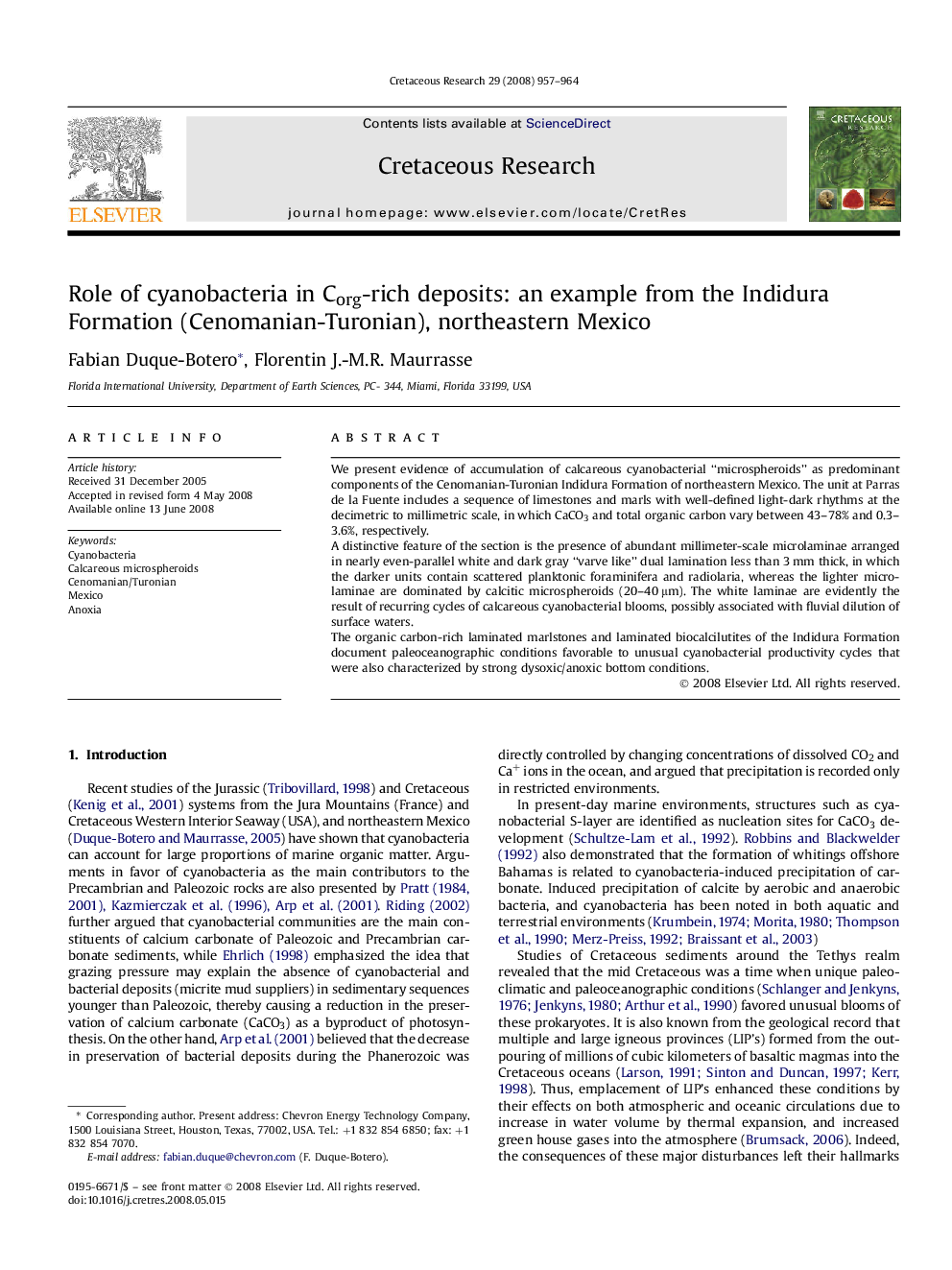| Article ID | Journal | Published Year | Pages | File Type |
|---|---|---|---|---|
| 4747709 | Cretaceous Research | 2008 | 8 Pages |
We present evidence of accumulation of calcareous cyanobacterial “microspheroids” as predominant components of the Cenomanian-Turonian Indidura Formation of northeastern Mexico. The unit at Parras de la Fuente includes a sequence of limestones and marls with well-defined light-dark rhythms at the decimetric to millimetric scale, in which CaCO3 and total organic carbon vary between 43–78% and 0.3–3.6%, respectively.A distinctive feature of the section is the presence of abundant millimeter-scale microlaminae arranged in nearly even-parallel white and dark gray “varve like” dual lamination less than 3 mm thick, in which the darker units contain scattered planktonic foraminifera and radiolaria, whereas the lighter microlaminae are dominated by calcitic microspheroids (20–40 μm). The white laminae are evidently the result of recurring cycles of calcareous cyanobacterial blooms, possibly associated with fluvial dilution of surface waters.The organic carbon-rich laminated marlstones and laminated biocalcilutites of the Indidura Formation document paleoceanographic conditions favorable to unusual cyanobacterial productivity cycles that were also characterized by strong dysoxic/anoxic bottom conditions.
